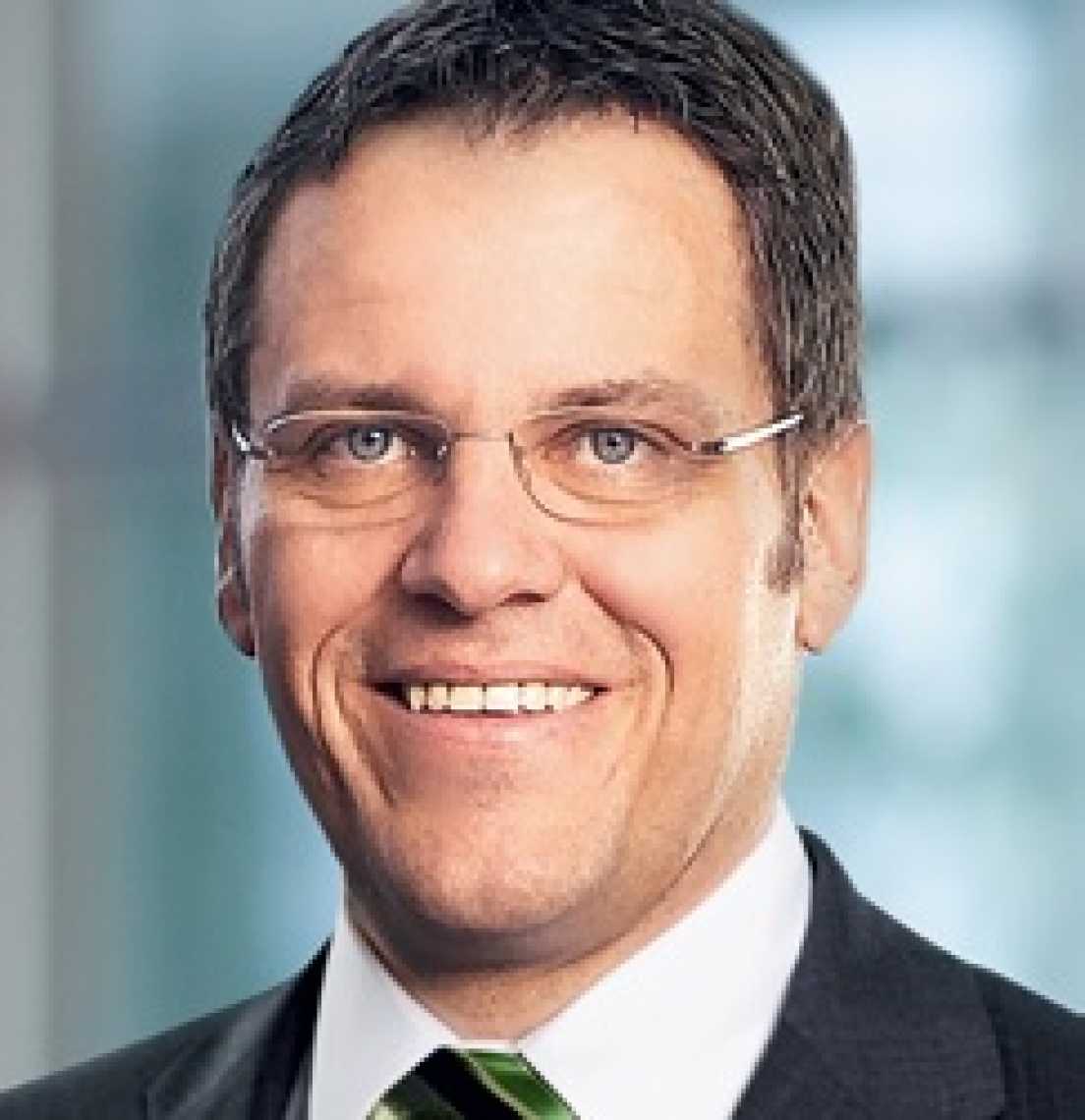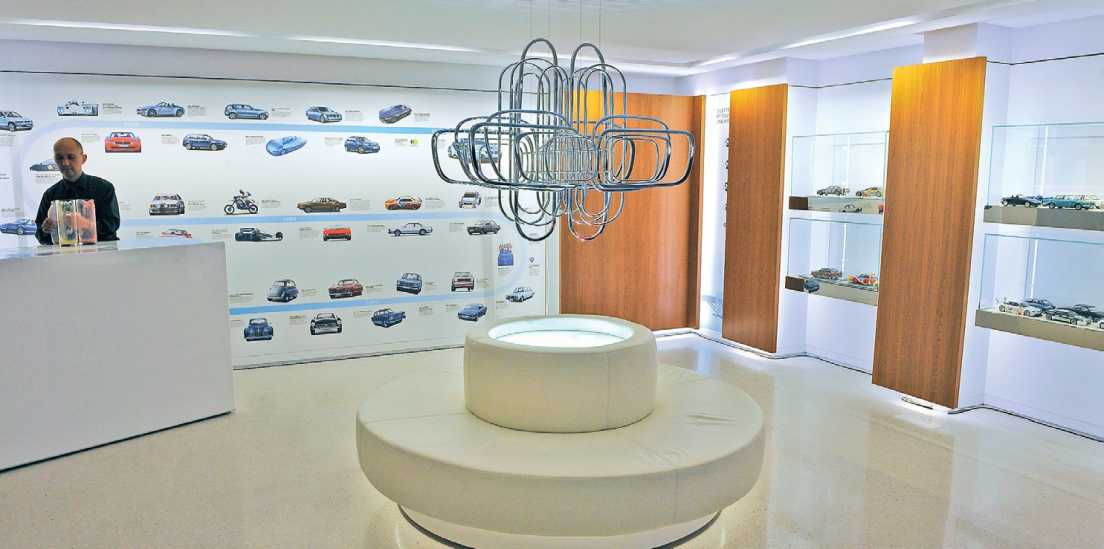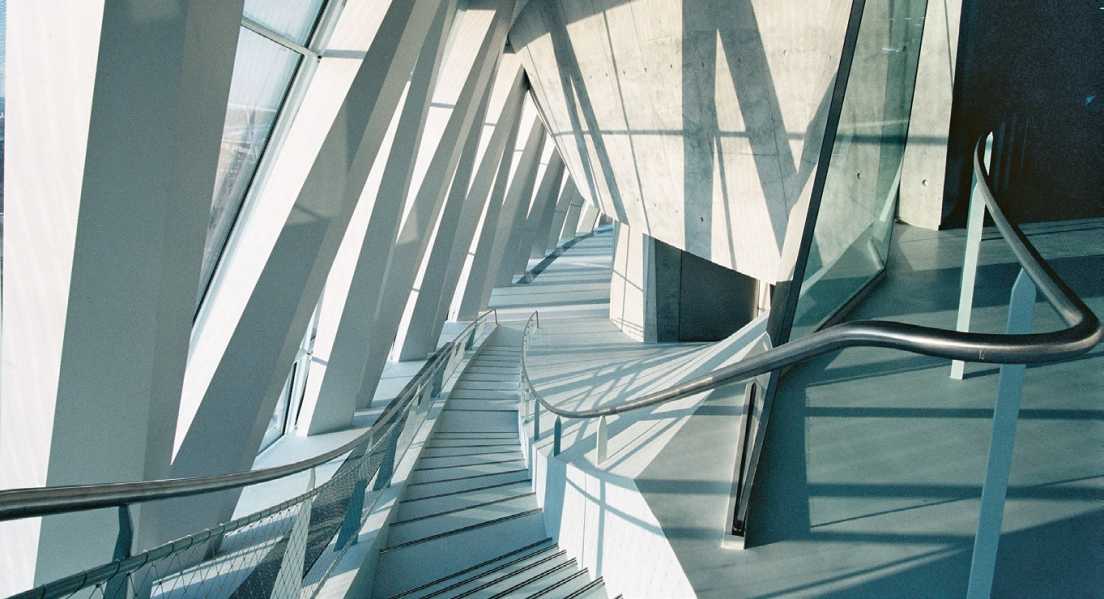Project development car dealership
Project development - Car companies invest huge sums in new branches, exclusive showrooms and spectacular museums. In the process, the real estate becomes a brand ambassador.

Porsche Schweiz AG is building a new headquarters and branch in Zug. So far, so unspectacular. But one sentence in the company's announcement raises eyebrows: "The branch will be built in line with Porsche's CI." Corporate identity and car dealerships initially sound like hot air from PR word bubbles. Car companies, however, take the topic very seriously in their new construction projects. When BMW, Porsche, or VW talk about "recognition value," "consolidation of the brand," and "globally unmistakable design," this means for the real estate specialists involved: There are extensive specifications and detailed regulations regarding the interior design and materials used for construction.
Anything but a niche topic
The entire construction project is subordinated to the goal of communicating the company's strategy and brand essence. And to do so in a uniform manner worldwide. Whether they buy their car in Zurich, Paris, or Shanghai, customers should feel that they are with Porsche and not with its competitor BMW as soon as they enter the dealership. To reinforce this impression, the smallest detail has to be right. "For example, the pedestals on which the vehicles are presented are standardized and have to match the grid of the tile," says Dierk Mutschler, board member at project developer Drees & Sommer (Dreso), reporting on his experience.
He proves that CI in car dealership construction is anything but a niche topic with bare figures: The automotive team at Drees & Sommer comprises between 70 and 80 employees and contributes EUR 20 to 25 million to the group's annual turnover. Mutschler and his colleagues are currently managing some 30 international projects, ranging from initial inquiries to properties already under construction. The investment volume in each case is between ten and 80 million euros. Among the outstanding projects that Mutschler has managed are the Mercedes-Benz World in Stuttgart and the Mercedes branch in Milan, which has been in operation since 2011.

Open up new markets
So the topic of CI in car dealership construction is not new. At least not in Europe. Most car dealerships here have already been upgraded to CI standards in the last ten years. But in view of declining sales figures in their home market of Germany, the major vehicle manufacturers are focusing on expansion in countries with high economic growth and large populations - China being a prime example. Porsche, for example, wants to increase the number of its centers in China from the current 65 to 100 within two years. But there is more to it than simple car dealerships. In Shanghai, China's first "Porsche Experience Center" is currently under construction right next to the Formula 1 race track. The opening is to be celebrated next spring. A driving center is being built on an area of 100,000 square meters at a cost of 17 million euros. In the future, visitors will be able to test their vehicles on various courses.
Daimler subsidiary Mercedes- Benz Cars has also long been well represented in China. The sales network grew by 75 new dealers in 2013 alone, and the brand is increasingly present outside the country's largest cities. And the group is planning something special: A Mercedes Benz Cultural Center "with groundbreaking architecture" is to be built in Beijing, according to the car company. An architectural competition is already underway. Although Daimler also wants to sell cars in Beijing, the central component of the project is a Mercedes Benz Museum - to introduce the Chinese to the Mercedes brand. The first museum in Stuttgart has attracted more than five million visitors since it opened in 2006 and has won several architectural awards. The construction costs were 150 million euros. The fact that the world's second Mercedes Museum is now to be built almost eight thousand kilometers away from the company's headquarters in Stuttgart-Untertürkheim shows how serious Daimler is about its investment in the Chinese market.

No off-the-shelf construction
Those who invest a lot also expect a lot. The demands of vehicle manufacturers on the planners of their branches are high. The properties are supposed to be flagships of the brand and "speak the corporate language," as Dreso board member Mutschler puts it. At the same time, architectural individuality is required, especially on the exterior. Brand recognition, yes, but with top-class architecture, please. It is therefore hardly surprising that Mutschler describes the main task for the project managers as bringing the company's CI teams together with the planners and architects on site. Adapting the client's CI specifications to the specific conditions in each country is the most exciting, because trickiest, task for him. "How do I implement the company's benchmarks in a high-price country like Germany, and how do I do it in a country like China, which is known as a low-price country?" is how he formulates the question that drives all those involved in the project. A practical example: The cars in the branches have to be cleaned regularly, because no customer wants to see dusty vehicles in the showrooms. There are different standards for vehicle cleaning, and a car wash is often integrated into the branch. In a low-cost country, however, one might decide against such an investment and favor a different approach.
In their external communications, the car companies claim that their CI specifications are only about creating an unmistakable brand experience. Company spokespersons elegantly sidestep questions about the economic benefits of CI specifications. But it is obvious that considerable savings can be realized with standardized planning processes and uniform interior design. And savings effects are also urgently needed, because at least in the domestic markets, the car market seems to be gradually becoming saturated. Many dealers have been reporting falling sales for years. According to industry experts, numerous German dealerships are threatened with insolvency and have to be supported by the manufacturer groups every year with payments running into millions. So it is only natural that they are looking for new sales channels.

Porsche plans to invest billions
In addition to China, other country markets are therefore gradually coming into focus. Porsche, for example, is building a new U.S. headquarters and customer training track in Atlanta. And in Carson, California, the sports car manufacturer is planning to build another customer test track. The investment here amounts to more than 100 million US dollars. The Group's growth plans are impressive in any case: by 2018, Porsche plans to operate more than a thousand centers worldwide, up from 750 at present. The company and private investors, usually the owners of Porsche centers, will invest the enormous sum of around two billion euros in the expansion of Porsche's own branches around the world by 2018. Other industry experts also cite countries such as Mexico and Brazil as new growth markets. Production has already been taking place there for a long time, so it seems only natural to strengthen local sales as well.
In Europe, meanwhile, the branches are becoming smaller but more exclusive. BMW is probably the carmaker with the most radical concept in terms of sales at the moment. Not only is the company already testing direct sales of cars via the Internet. As part of the "Future Retail" program, new brand presences are also being created, so-called brand stores. BMW already has such stores in Paris and London, and Mini in Amsterdam. Instead of stocking a large number of different new cars, only a few models are presented in showrooms that almost resemble luxury boutiques. Increasingly, the Group is also relying on virtual product presentations, as can already be seen at the Zurich branch and at BMWWelt in Munich. Spectacular, but also cost-saving.
Whether it's an elegant showroom or a car museum - project planners in the automotive sector are facing a number of innovations. But at least Drees & Sommer Executive Director Mutschler is not worried by these developments - on the contrary, he is looking forward to new challenges. "We enjoy managing projects of a certain complexity," he says, and you can hear that he would like to get started right away.
Images: Drees & Sommer, Porsche Schweiz AG, BMW Group, Mercedes Benz Museum









